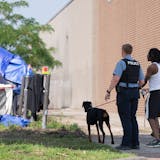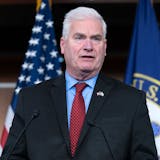No failure of social engineering has quite matched the forced busing of students to achieve "racial balance" in public schools. For decades, this grandiose experiment tore at our nation's social fabric, squandering millions of dollars and perpetuating the hoax that black children can't learn adequately unless they are sitting next to white children.
Last week, we saw more evidence of the wrong-headedness of the premise behind busing -- that racial balance is the critical factor in minority academic achievement. For the second year in a row, students in The Choice Is Yours -- a voluntary program in which low-income, minority Minneapolis students are bused to schools in nine suburbs -- scored no better than their peers in the Minneapolis schools in reading and math. In 2005-6, students who stayed in Minneapolis schools outperformed their suburban-school peers, and in 2006-7 they scored slightly higher in reading and practically even in math.
There's some question about how much can be concluded from these comparisons. But results have fallen short of hopes in 2001, when the program was launched as part of a lawsuit settlement with the NAACP.
Today, it's easy to forget that, from the mid-1970s to the late 1990s, Minneapolis was one of hundreds of school districts where kids were compelled to be bused across town to achieve a vision of optimal racial balance.
During that era, federal judges, not school boards, often effectively set education policy. Judicial over-reaching was perhaps most on display in Missouri, where in the mid-1990s, 6 to 8 percent of the state budget went to desegregation expenses for the Kansas City and St. Louis schools, and a judge nearly doubled local property taxes to fund a $1 billion-plus desegregation program.
In Minneapolis, busing turned many families' lives upside down. Thousands of students spent extra hours on the bus each week, and parents struggled to stay connected with children who were often assigned to widely separated schools. The scheme cost millions, but black achievement did not substantially improve.
Busing did, however, trigger a critical unintended consequence: massive white middle-class flight. In 1971, the Minneapolis school district was 14.5 percent minority. In 1985, it was 40 percent minority. In 1994, it was 62 percent minority and today it's 70 percent minority.
In 1995, Mayor Sharon Sayles Belton responded to black families' frustration by joining black mayors across the country -- Denver, St. Louis, Cleveland -- in a crusade to end mandatory busing and return to neighborhood schools. In 1999, a judge finally approved a state desegregation plan that dropped mandatory racial quotas in favor of voluntary integration strategies.

